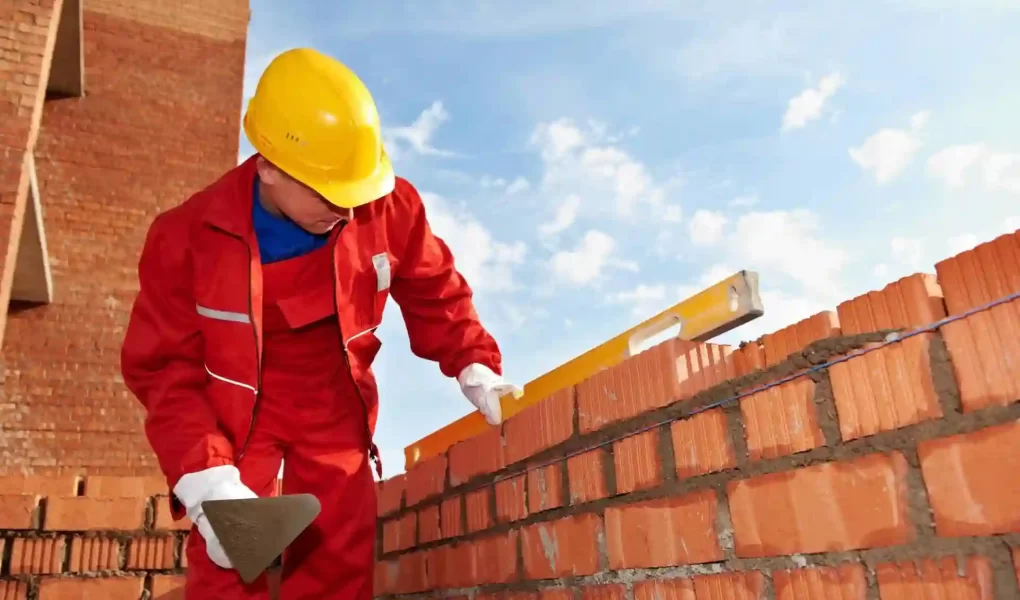Rendering brick can be a transformative decision for your home. It offers aesthetic appeal and practical benefits such as insulation and protection against weather elements. While requiring attention to detail and the right materials, the process can yield impressive results when done correctly.
Choosing the right render type is crucial, as it affects appearance and durability. Regular maintenance ensures that your rendered surface remains attractive over time; for those considering alternatives, options like cladding or paint better suit different needs or styles.
What is rendering, and why do people do it?

Rendering is the process of applying a layer of material over brick or masonry surfaces. This technique usually involves a mix of sand, cement, and water to create a smooth finish. Homeowners often turn to rendering as a way to enhance the visual appeal of their properties.
People choose to render for various reasons. For some, it’s about modernizing an outdated façade, giving their home a fresh look that stands out. Others appreciate its ability to cover imperfections in brickwork, providing an even more visually appealing surface.
Rendering can help protect bricks from moisture damage and weathering. It acts as a barrier against rain and wind while improving insulation—keeping homes warmer in winter and cooler during summer. This dual benefit makes rendering not just aesthetic but practical, too.
Benefits of rendering brick
Rendering brick offers a stunning aesthetic upgrade. A smooth, uniform finish can transform the look of your home. It provides countless design options, from modern to traditional styles.
Another significant benefit is improved insulation. Render acts as an additional layer over bricks, enhancing thermal efficiency. This means homes stay warmer in winter and cooler in summer, lowering energy bills.
Rendering protects bricks from weather damage. It shields against rain, wind, and even UV rays that can cause deterioration over time.
Maintenance becomes easier, too; rendered surfaces are simpler to clean than porous brickwork. With just a wash down occasionally, they can retain their fresh appearance for longer.
The process of rendering brick

Rendering brick involves several key steps to achieve a smooth and durable finish. As a first step, clean the surface and ensure that it is free of dust and debris. This prepares the bricks for optimal adhesion.
Next, apply a primer if necessary. It helps to enhance bond strength between the render and the bricks. Once primed, mix your chosen render according to manufacturer instructions.
Using a trowel, spread an even layer of render over the brickwork. Aim for consistent thickness throughout; this contributes to both aesthetics and durability. Be mindful of corners and edges for a neat appearance.
Allow it to dry partially before applying additional coats as needed. Depending on your selected materials, you may need two or three layers for the best results.
Common materials and tools used for rendering
Rendering involves a variety of materials and tools that are essential for achieving the desired finish. The most common rendering materials include cement, lime, and sand. According to the requirements of the project, each offers unique advantages.
Cement render is popular for its durability and weather resistance. Lime render provides breathability, making it ideal for older buildings where moisture control is crucial. The sand acts as a filler to enhance texture.
Regarding tools, trowels are indispensable for applying and smoothing the render. A hawk helps in holding material while working at height. Youuse a spray machine for faster application for larger surfaces.
Finishing tools like floaters help create different textures or smooth finishes according to preference. Having the right equipment ensures your rendering job looks great and lasts long.
How to choose the right type of render for your home
Choosing the right type of render for your home involves considering several factors. Begin with the style of your property. Traditional homes may benefit from a more classic finish, while contemporary builds can handle bolder textures and colors.
Climate plays a significant role, too. If you live in an area prone to heavy rain or humidity, opt for water-resistant renders that prevent moisture buildup. Conversely, warmer climates might allow for breathable options that help regulate indoor temperatures.
Maintenance and care for rendered brick
Maintaining rendered brick is essential for preserving its appearance and functionality. Regular cleaning can help prevent dirt buildup and stains. A gentle wash with soapy water or a specialized cleaner every few months keeps things looking fresh.
Check for cracks or damage periodically. Small issues can escalate if left unattended, leading to more costly repairs. Filling in any gaps promptly ensures moisture doesn’t seep behind the render.
Pay attention to drainage around your home as well. Proper flow prevents water from pooling near walls, which can cause deterioration over time.
If you notice mold or mildew, don’t panic—act quickly! Use a mild bleach solution to effectively tackle these growths without harming the render.
Alternatives to rendering
Cladding is a popular option that involves attaching materials like wood, vinyl, or metal over existing brick. It offers insulation benefits and can enhance curb appeal without compromising the original structure.
Another approach is painting. High-quality exterior paint specifically designed for masonry can transform brick facades while allowing the texture and character of the bricks to shine through.
For those seeking a more natural look, stone veneer provides an elegant finish. This lightweight material mimics real stone and creates a rustic appearance with easy installation.
Applying sealants can protect your brick from moisture damage while maintaining its original aesthetic. These options allow homeowners to customize their exterior without committing to rendering.




